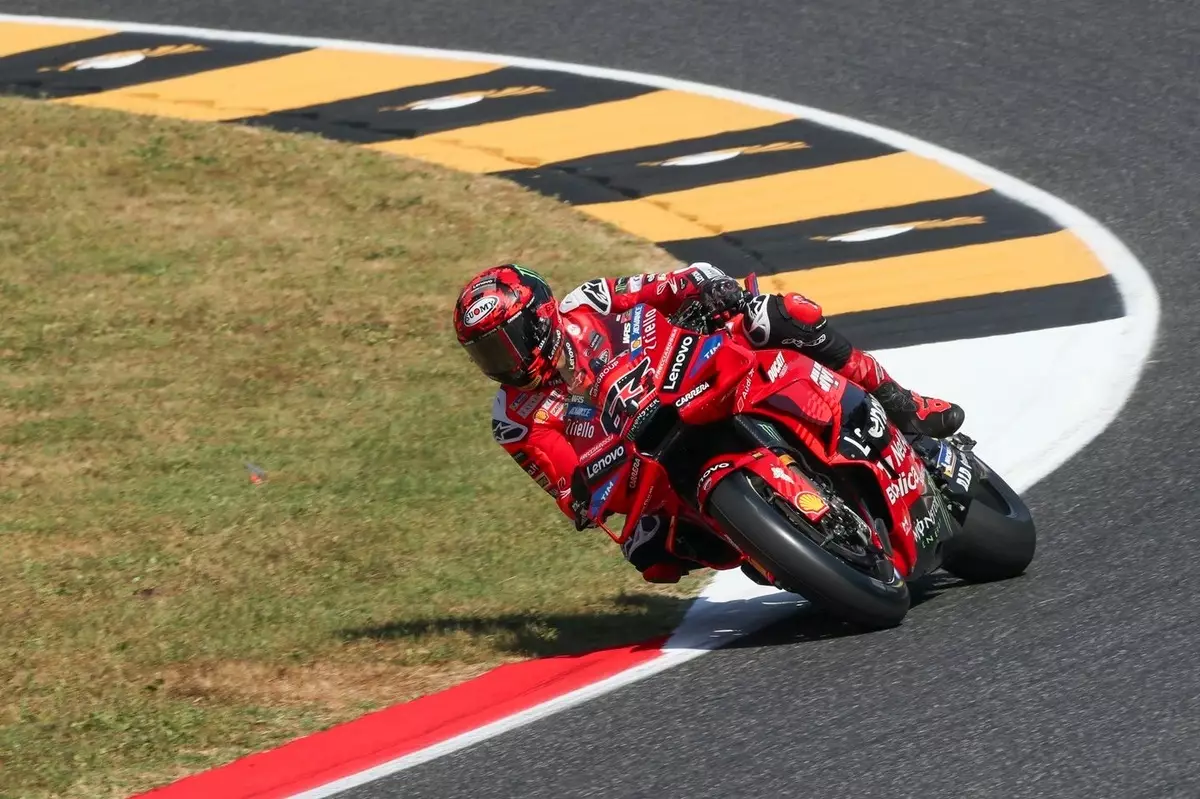As the Italian Grand Prix at Mugello unfolds this weekend, the conversation around braking systems has turned into a heated discussion rife with technical implications and performance considerations. The focus stems mainly from Francesco Bagnaia’s recent experimentation with brake disc specifications, which ignited curiosity among teams and fans alike. Increasing the diameter of brake discs is often viewed as a straightforward upgrade for improved performance; however, such changes are not as simple as they may seem. With every modification comes a series of trade-offs that can deeply impact the overall dynamics of a race bike.
Performance vs. Weight: The Brake Disc Trade-off
Brembo’s Andrea Pellegrini provided key insights into the nuances of brake configuration, particularly emphasizing the delicate balance between performance and weight. At the Motorland circuit in Aragon, Bagnaia started the race using a standard 340mm high mass disc. The track’s energy demands pushed him to consider a larger 355mm disc during warm-up. This decision, while seemingly promising in terms of braking responsiveness, brings about hidden drawbacks — notably, the additional weight. Such an increase is vital to consider, as a heavier bike can alter handling, acceleration, and overall agility on the track, specifically at a challenging venue like Mugello.
The Unique Challenges of Mugello’s Circuit
Mugello presents its own distinct challenges concerning braking performance. Despite having a track layout that exerts lower energy demands on the brakes compared to Aragon, the choice of using a 340mm disc seems the more prudent option for Bagnaia. Shifting to a larger disc not only adds weight but also necessitates the installation of additional equipment — such as temperature covers — which further compounds the weight gain. Here lies the crux of the dilemma: balancing the need for optimal temperature control with the inherent weight penalties associated with more complex braking systems.
The Crucial Role of Temperature Management
Temperature control stands as a pivotal performance parameter for MotoGP bikes, as Pellegrini points out. A cold disc can drastically reduce stopping power, rendering the intricate technology behind enhanced brake discs ineffective. The challenge is in achieving the right temperature quickly, particularly when utilizing larger discs. This scenario emphasizes the interdependence of brake performance and tire dynamics; how a bike feels and responds in the corners hinges importantly on effective braking.
Navigating Technical Decisions in Competitive Racing
As riders and teams deliberate over their braking choices, the complexities of engineering decisions become evident. Every adjustment to braking systems is not just a technical upgrade but a strategic pivot that could impact race outcomes. Mauro Pellegrini has illustrated the multifaceted considerations surrounding brake modification choices, compelling teams to think critically about their racing strategies. The developments at Mugello are not merely a technical showcase; they serve as a reminder of the multi-layered implications that technical innovations carry in a highly competitive sport like MotoGP.


Leave a Reply